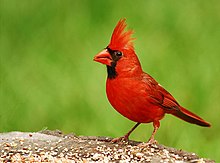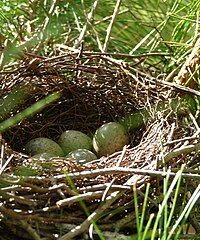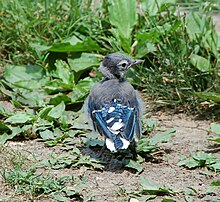Welcome to the last weekend in August. A few more days and things will improve for all of us in South Texas. The migrations are in progress. The winter feathers are growing in. And, the squirrels are stashing nuts away. All indications are: we are moving into Fall. Now and then, in the last few days of August, it is nice to hold on a few more moments to the lazy, hazy days of summer. This was such a day: A Blue Jay Day. Enjoy your photostudy of the baby Blue Jays!
The first bird below (Baldy) is a baby getting his new feathers in around his head. (Molting). He is not sick. All birds (around here) increase the feather number for fall and winter. Soon he will be beautiful like his brother!
http://en.wikipedia.org/wiki/Blue_Jay
Blue Jay
From Wikipedia, the free encyclopedia
The Blue Jay (Cyanocitta cristata) is a passerine bird in the family Corvidae, native toNorth America. It is resident through most of eastern and central United States and southern Canada, although western populations may be migratory. It breeds in bothdeciduous and coniferous forests, and is common near and in residential areas. It is predominately blue with a white chest and underparts, and a blue crest. It has a black, U-shaped collar around its neck and a black border behind the crest. Sexes are similar in size and plumage, and plumage does not vary throughout the year. Four subspecies of the Blue Jay are recognized.
The Blue Jay mainly feeds on nuts and seeds such as acorns, soft fruits, arthropods, and occasionally small vertebrates. It typically gleans food from trees, shrubs, and the ground, though it sometimes hawks insects from the air. It builds an open cup nest in the branches of a tree, which both sexes participate in constructing. The clutch can contain two to seven eggs, which are blueish or light brown with brown spots. Young arealtricial, and are brooded by the female for 8–12 days after hatching. They may remain with their parents for one to two months.
The bird's name derives from its noisy, garrulous nature.[2] It is sometimes called a "jaybird"
| Blue Jay | |
|---|---|
 | |
| Conservation status | |
| Scientific classification | |
| Kingdom: | Animalia |
| Phylum: | Chordata |
| Class: | Aves |
| Order: | Passeriformes |
| Family: | Corvidae |
| Genus: | Cyanocitta |
| Species: | C. cristata |
| Binomial name | |
| Cyanocitta cristata (Linnaeus, 1758) | |
 | |
| Global range. | |
Reproduction
The mating season begins in mid-March, peaks in mid-April to May, and extends into July. Any suitable tree or large bush may be used for nesting, though an evergreen is preferred. The nest is preferentially built at a height in the trees of 3 to 10 m (9.8 to 33 ft). It is cup-shaped and composed of twigs, small roots, bark strips, moss, other plant material, cloth, paper, and feathers, with occasional mud added to the cup.
Blue Jays are not very picky about nesting locations. If no better place is available – e.g. in a heavily deforested area – they will even use places like the large mailboxes typical of the rural United States.[11] They also appropriate nests of other mid-sized songbirds as long as these are placed in suitable spots; American robin nests are commonly used by Blue Jays, for example.
Blue Jays typically form monogamous pair bonds for life. Both sexes build the nest and rear the young, though only the female broods them. The male feeds the female while she is brooding the eggs. There are usually between 3 and 6 (averaging 4 or 5) eggs laid and incubated over 16–18 days. The young fledgeusually between 17–21 days after hatching.[14]
After the juveniles fledge, the family travels and forages together until early fall, when the young birds disperse to avoid competition for food during the winter. Sexual maturity is reached after one year of age. Blue jays have been recorded to live for more than 26 years in captivity and one wild jay was found to have been around 17 and a half years old.[18] A more common lifespan for wild birds that survive to adulthood is around 7 years.[citation needed] Beyond predation and the occasional collision with man-made objects, a common cause of mortality in recent decades has been the West Nile Virus, which corvids as a whole seem especially subceptible to. However, despite several major local declines, overall Blue Jays have not seemed to have been depleted by the disease.
(Please see link for complete Article)
The Beautiful Brother to Baldy:
http://en.wikipedia.org/wiki/Cardinal_(bird)
Cardinal (bird)
From Wikipedia, the free encyclopedia
| Cardinal | |
|---|---|
 | |
| Male Northern Cardinal | |
| Scientific classification | |
| Kingdom: | Animalia |
| Phylum: | Chordata |
| Class: | Aves |
| Order: | Passeriformes |
| Suborder: | Passeri |
| Family: | Cardinalidae Ridgway, 1901 |
Some of You may remember: Slasher. He lost the top of his head when he was very young. A beak blade woodpecker took the top right off. He has healed and is growing new feathers. The crest will not grow back. He appears to be a very happy bird.
Baby Male Cardinal still getting his red feathers in:
...this is brendasue signing off from Rainbow Creek. See You next time! Remember at this time of year to put out seed for the weary travelers (and/or nectar feeders). The kindness You show to other species comes back to You. Thank all of You for visiting the Nature Blog from time to time and checking out my birds. I appreciate all your +1s and comments in addition to all the photos and albums You share with me. I can not answer all, but please know I thank you and See You! Also, to those who have rang me up to chat: Sorry, I do not chat. Nothing against You. I am just running out of time to do everything!!!!! If I am on the computer, I am working, not playing!
Enjoy some closing shots of the big birds:
One of the Kites:
Baby Buzz
Baby Buzz in 'Blue' (heat map effect in Picasa)
O+O




















































































No comments:
Post a Comment
Hi Everybody! Please say hello and follow so I know you are here! Due to the inconsideration of people trying to put commercials on my blog comment area, I have restricted use of anonymous posts. Sorry that some hurt all.
My public email is katescabin@gmail.com No spammers or trolls